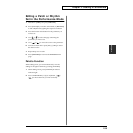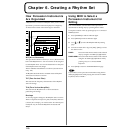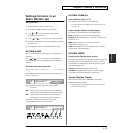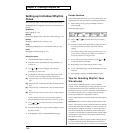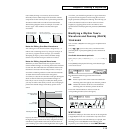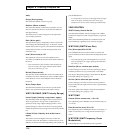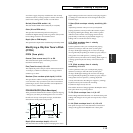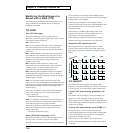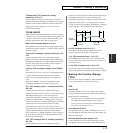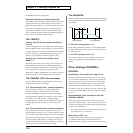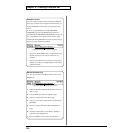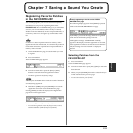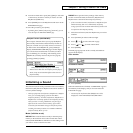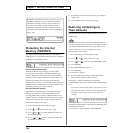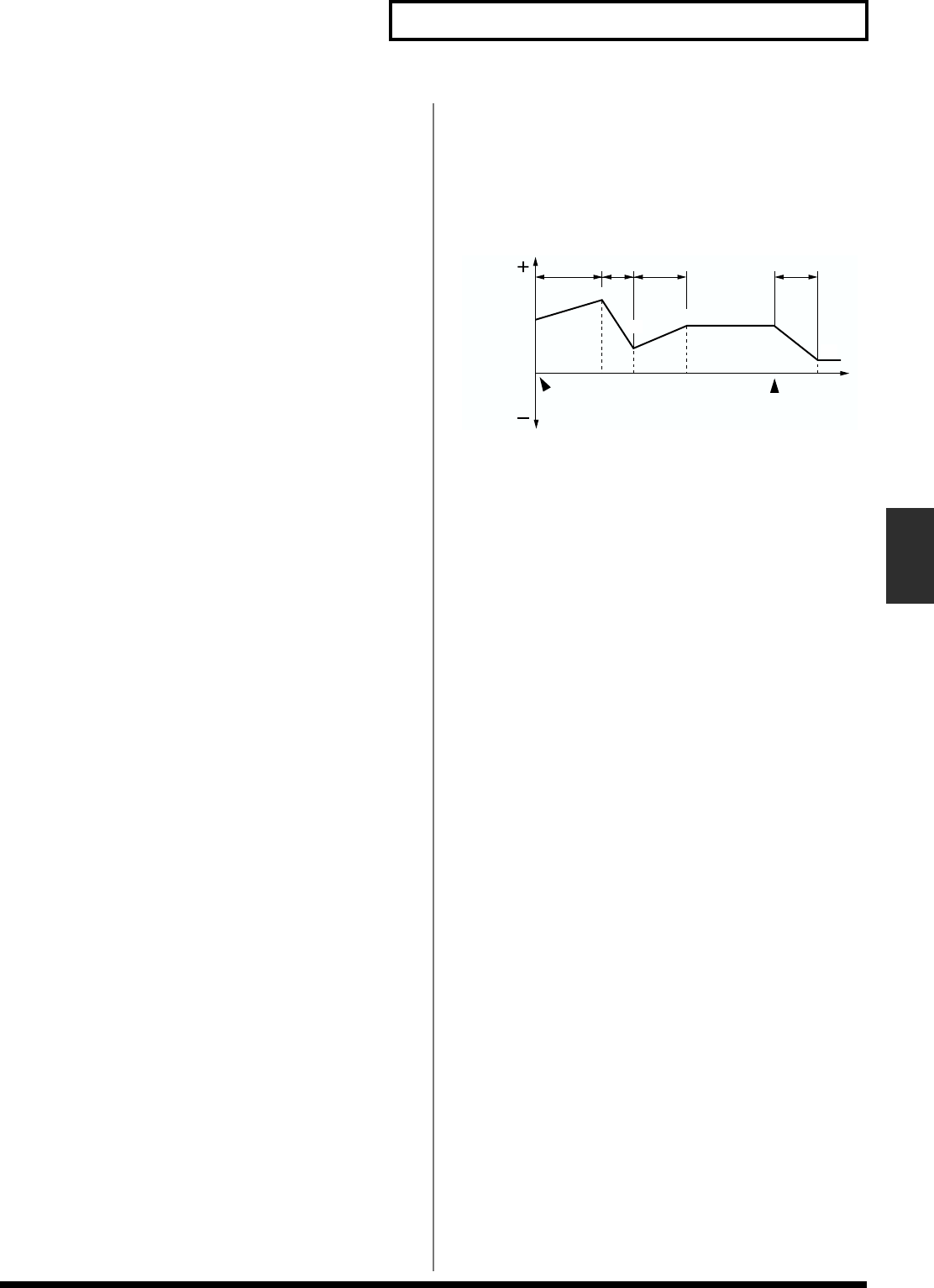
117
Chapter 6. Creating a Rhythm Set
Chapter 6
V-Resonance (TVF resonance velocity
sensitivity) -63–+63
Use this parameter when you want velocity to affect the
amount of Resonance. With higher settings, there is a greater
difference in the amount of Resonance between softly and
strongly played notes. Negative (-) values reverse the
direction of the change.
TVF ENVELOPE
These parameters determine the amount of filter enveloping
– changes to your original cutoff frequency setting that occur
over time – the effect of velocity on the TVF envelope, and
the basic characteristics of the TVF envelope itself.
Depth (TVF envelope depth) -63–+63
This adjusts the amount of filter enveloping. Higher settings
produce more change. Negative (-) values invert the effect of
the TVF envelope.
V-Sens (TVF envelope velocity sensitivity) -63–
+63
Use this parameter when you want keyboard playing
dynamics (velocity) to affect the depth of the TVF Envelope.
With higher settings, there is a greater difference in the TVF
envelope depth when you play softly or hard. Negative (-)
settings reverse the direction of change.
V-Curve (TVF envelope velocity curve) FIXED/
1–7
This selects one of seven velocity curves that determine how
velocity will affect the depth of the TVF Envelope. The
selected curve is displayed graphically to the right of its
value.
When set to “FIXED,” the TVF envelope depth remains
unchanged, regardless of how hard or soft you play.
VT-1 (TVF envelope time 1 velocity sensitivity)
-63–+63
Use this parameter when you want keyboard playing
dynamics (velocity) to affect T1 (Time 1) of the TVF envelope.
With higher settings, the T1 value will change more
significantly depending on whether you play softly or with
greater force. With positive (+) settings, greater keyboard
velocity will reduce the T1 setting. With negative (-) settings,
greater keyboard velocity will increase the T1 setting.
Use this parameter when you want velocity to affect T1
(time) of the TVF envelope. For higher settings, there will be
a greater difference between softly and strongly played
notes. For positive (+) settings, keyboard velocity will speed
up the T1 time. For negative (-) settings, keyboard velocity
will slow down the T1 time.
VT-4 (TVF envelope time 4 velocity sensitivity)
-63–+63
Use this parameter when you want keyboard playing
dynamics (velocity) to affect T4 (Time 4) of the TVF envelope.
With higher settings, the T1 value will change more
significantly depending on whether you play softly or with
greater force. With positive (+) settings, greater keyboard
velocity will reduce the T4 setting. With negative (-) settings,
greater keyboard velocity will increase the T4 setting.
fig.6-10.e
L0 (TVF envelope level 0) 0–127
This sets the amount of change applied to the cutoff
frequency setting when the key is first pressed.
T1–4 (TVA envelope time 1–4) 0–127
These settings determine the times over which the cutoff
frequency setting will change from one TVF envelope level
(L1–L4) to the next.
L1–L4 (TVF envelope level 1–4) 0–127
Each TVF envelope level value determines an amount of
change to be applied to the original cutoff frequency setting.
Making the Volume Change
(TVA)
The TVA (Time Variant Amplifier) controls the Rhythm
Tone’s volume changes and stereo positioning.
TVA
Level 0–127
This sets the Rhythm Tone’s basic volume. This setting is
useful primarily for adjusting the volume balance between
Rhythm Tones in a Rhythm Set.
* The overall volume of the Rhythm Set is set by the Rhythm
Level (RHYTHM COMMON page) setting, raising or
lowering the Tone level settings of its individual Rhythm
Tones by the selected amount. (p. 111)
Pan (Pan)L64–0–63R
This specifies the stereo position of the Rhythm Tone. L64
places the Rhythm Tone hard left, 0 puts it dead-center and
63R pans it hard right.
Random (Random pan depth) 0–63
Use this parameter to activate random panning, note-by-
note. Higher values result in more extreme fluctuations in
T1 T2 T3 T4
L3
L1
L2
L4
L0
Cutoff
Frequency
Time
key is
pressed
key is
released



